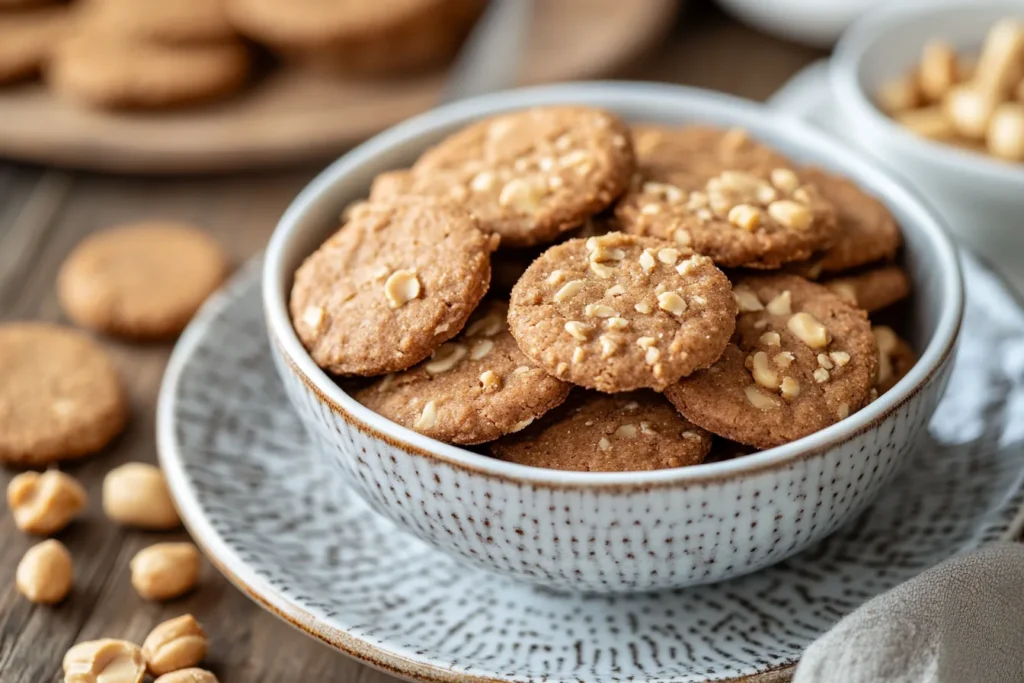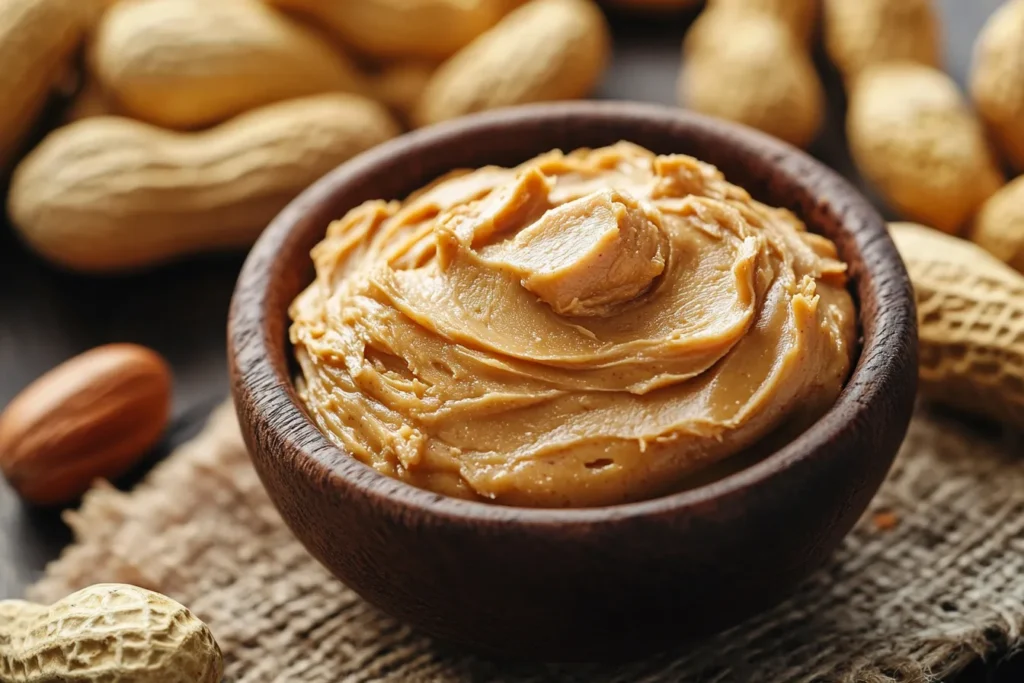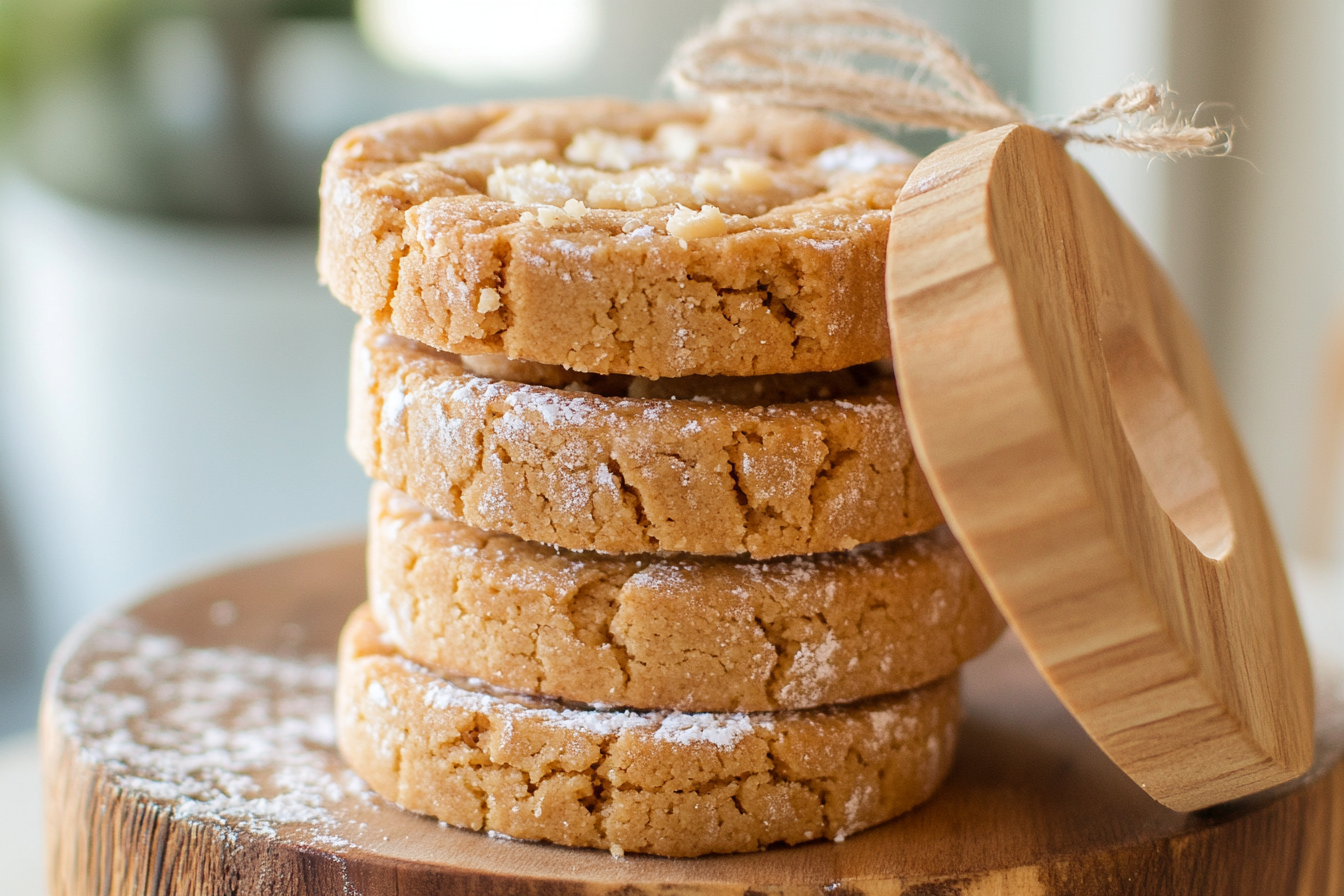Peanut butter is a staple in many households, and Jif Peanut Butter stands as one of the most recognized names in the industry. Whether it’s a creamy spread on toast or the base for a delicious peanut butter cookie, Jif has become synonymous with quality and flavor. But what makes this brand so popular, and what lies behind its ingredients? Let’s dive in to uncover the history, ingredients, and product variations of Jif Peanut Butter.
History and Popularity of Jif
Jif Peanut Butter, introduced in 1958 by Procter & Gamble, quickly became a household favorite due to its superior taste and texture. Over the decades, its slogan “Choosy moms choose Jif” resonated with families, cementing its place as a trusted brand. Now owned by Smucker’s, Jif continues to dominate the peanut butter market in the United States.
The popularity of Jif can be attributed to several factors:
- Its smooth and creamy texture appeals to both kids and adults.
- A wide variety of options, including creamy, crunchy, and specialty products, caters to diverse preferences.
- The brand’s consistent marketing efforts and commitment to quality have fostered consumer trust.
Jif has adapted to changing consumer preferences, introducing natural and organic varieties to cater to health-conscious customers. For a detailed history of peanut butter’s evolution, you can check resources like The Peanut Institute.
Ingredients Overview in Jif Peanut Butter
At its core, peanut butter is a simple product made by grinding peanuts into a paste. However, many commercial brands, including Jif, enhance their spreads with additional ingredients for flavor, texture, and shelf stability. A standard jar of Jif Peanut Butter includes:
- Roasted peanuts: The primary ingredient and source of protein.
- Sugar: Adds a touch of sweetness.
- Hydrogenated vegetable oils (to prevent separation).
- Salt: Enhances flavor.
While these ingredients ensure a palatable, long-lasting product, they have sparked debates about whether such additions align with health-conscious eating.

The Importance of Ingredient Transparency in Food Products
Consumers today are increasingly demanding transparency in the food industry. Understanding what goes into a product like Jif Peanut Butter helps individuals make informed dietary choices. This transparency is crucial because:
- It allows people with allergies or dietary restrictions to avoid harmful components.
- It helps consumers compare products to find healthier alternatives.
- Transparent labeling builds trust between brands and customers.
For more on how ingredient transparency impacts consumer trust, visit FDA Guidelines.
Common Misconceptions About Peanut Butter Ingredients
Many believe that all peanut butter products are made purely from peanuts. However, commercial brands often include added sugars, oils, and preservatives. This misconception can lead to uninformed purchases, especially among those aiming for a healthier diet.
Common myths include:
- All peanut butters are equally healthy. (False – Ingredients vary widely.)
- “Natural” on the label means no added sugar or oils. (False – Some natural products still include additives.)
- Reduced-fat peanut butter is healthier. (False – It often contains more sugar.)
Comparison of Natural vs. Regular Peanut Butter Ingredients
Natural peanut butter is often touted as the healthier choice, but how does it compare to regular peanut butter? Let’s break it down:
- Natural Peanut Butter: Typically contains only peanuts and salt. Some may have a small amount of natural oil added.
- Regular Peanut Butter: Includes additional ingredients like sugar, hydrogenated oils, and stabilizers to improve taste and texture.
While natural options may lack the sweetness of regular peanut butter, they are usually free from added sugars and trans fats, making them a better option for health-conscious individuals.
Types of Jif Peanut Butter Products
Jif caters to a wide audience by offering an array of products to suit different tastes and dietary needs. From creamy classics to innovative organic spreads, the brand ensures there’s something for everyone.
Crunchy vs. Creamy: Ingredient Variations
The great peanut butter debate often boils down to this: crunchy or creamy? While the two varieties share the same base ingredients, their textures differ significantly.
- Creamy Jif: Made with finely ground peanuts for a smooth texture.
- Crunchy Jif: Contains small peanut pieces for added texture and crunch.
For those who appreciate versatility, creamy peanut butter works well in recipes, while crunchy is a favorite for adding texture to snacks.
Specialty Products: Low-Fat and Reduced Sugar Options
To cater to consumers focused on calorie and sugar intake, Jif offers specialty products such as:
- Low-Fat Peanut Butter: Contains less fat but often compensates with added sugar.
- Reduced Sugar Peanut Butter: Uses sugar substitutes to maintain sweetness while lowering sugar content.
These options aim to provide the same delicious taste while meeting specific dietary preferences.
Organic and Natural Jif Peanut Butter Varieties
As the demand for healthier alternatives grows, Jif has expanded its product line to include:
- Natural Jif: Made with simple ingredients like peanuts, sugar, palm oil, and salt.
- Organic Jif: Certified organic and free from synthetic pesticides or fertilizers.
These varieties offer a more health-conscious option without compromising on taste.
Ingredient Analysis of Jif Peanut Butter
Understanding the label on a jar of Jif Peanut Butter is crucial for those who care about their health and nutrition. In this section, we’ll analyze the ingredients, focusing on the sugars, oils, and other components that make up this popular spread.
Breaking Down the Label: Jif’s Ingredients
A typical jar of Jif Peanut Butter contains the following ingredients:
- Roasted peanuts: The base ingredient, providing protein and healthy fats.
- Sugar: Adds sweetness.
- Molasses: Enhances flavor and sweetness naturally.
- Fully hydrogenated vegetable oils (rapeseed and soybean): Stabilize the texture and prevent oil separation.
- Mono- and diglycerides: Improve consistency and shelf life.
- Salt: Balances flavor.
While these ingredients are standard for most processed peanut butter brands, some consumers express concerns over added sugars and hydrogenated oils.
Key Components in Jif Peanut Butter
Roasted Peanuts
- The main ingredient and the star of the show.
- Provide essential nutrients such as protein, fiber, and healthy monounsaturated fats.
- Offer natural sweetness and a rich, nutty flavor.
Sugar
- Adds a subtle sweetness to counterbalance the savory flavor of peanuts.
- Increases the calorie count and may contribute to excess sugar consumption if not monitored.
Hydrogenated Oils
- Prevent natural oil separation, which occurs in pure peanut butter.
- Often criticized for their potential to include trans fats, although fully hydrogenated oils in Jif do not contain trans fats.
Salt
- Enhances the overall taste.
- Provides a small amount of sodium, which is important to monitor for those on low-sodium diets.
Added Sugars: What Are They?
Added sugars in processed foods are a growing concern. In Jif Peanut Butter, the sugar is not excessive, but it’s still an ingredient to be aware of. The types of added sugars commonly found in peanut butter include:
- Refined white sugar: Provides sweetness without altering the taste too much.
- Molasses: A natural sweetener that complements the roasted flavor of peanuts.
Understanding added sugars is essential, as excessive intake can lead to health issues such as obesity, diabetes, and heart disease. For more on the effects of added sugars, check out Harvard Health’s guide.
Does Jif Peanut Butter Contain Sugar? Detailed Analysis
Yes, Jif Peanut Butter contains sugar, but the amount varies depending on the product:
- Classic Jif Peanut Butter: About 2-3 grams of sugar per serving (2 tablespoons).
- Natural Jif: Slightly less sugar, but it still includes molasses for sweetness.
- Reduced Sugar Jif: Uses alternative sweeteners to reduce sugar content while maintaining flavor.
For those monitoring sugar intake, reading the label is key to making the best choice.
Types of Sugars Found in Processed Peanut Butter
In addition to the sugar found in Jif, processed peanut butters often use:
- High-fructose corn syrup: Not found in Jif but common in lower-quality brands.
- Honey or agave syrup: Often used in specialty or natural peanut butters.
- Artificial sweeteners: Found in reduced-sugar varieties, though Jif avoids these.
Nutritional Impacts of Sugar in Peanut Butter
Calories and Carbohydrate Breakdown
Each serving (2 tablespoons) of Jif Peanut Butter contains:
- 190 calories
- 16 grams of fat
- 8 grams of carbohydrates
- 3 grams of sugar
While the calorie count is reasonable for a protein-rich spread, the added sugar contributes to the carb content, making it less ideal for those on low-carb or keto diets.
Comparing Sugars in Jif to Competitor Brands
How does Jif stack up against other peanut butter brands in terms of sugar content? Let’s compare:
- Skippy: Similar sugar content (about 3 grams per serving).
- Peter Pan: Slightly higher sugar content (3-4 grams per serving).
- Natural brands: Usually less than 1 gram of sugar per serving.
Jif’s sugar content falls in the middle range, appealing to those who want a sweet but not overly sugary spread.
Health Considerations for People Monitoring Sugar Intake
For individuals with health concerns like diabetes or obesity, choosing a peanut butter with minimal or no added sugar is crucial. Alternatives such as Jif’s Natural or Reduced Sugar options provide better choices, as they:
- Lower sugar intake without sacrificing taste.
- Contain fewer artificial stabilizers.
- Provide a healthier fat-to-carb ratio.
Alternatives and Healthy Consumption
As consumers become increasingly health-conscious, they’re looking for alternatives that meet dietary needs without compromising flavor. In this section, we’ll explore healthier peanut butter options, provide tips for making homemade spreads, and discuss how to make informed decisions when shopping for peanut butter.
Healthier Choices in the Peanut Butter Aisle
Finding a healthier peanut butter doesn’t have to be complicated. By focusing on natural ingredients and minimal processing, you can enjoy a spread that’s both delicious and nutritious. When evaluating alternatives, consider:
- Natural Peanut Butters: Typically free from hydrogenated oils and added sugars.
- Organic Varieties: Made without synthetic pesticides or fertilizers.
- Powdered Peanut Butter: A lower-fat option that’s great for smoothies and baking.
Brands like Justin’s and Smucker’s Natural offer great options for health-conscious consumers.
Low-Sugar and No-Sugar-Added Alternatives
For those monitoring sugar intake, several low-sugar or sugar-free options are available. These include:
- Jif Natural: Contains just peanuts, sugar, palm oil, and salt with reduced sugar levels.
- Crazy Richard’s: A no-sugar-added peanut butter made with just one ingredient—peanuts.
- PB2 Powdered Peanut Butter: Provides a low-calorie, low-sugar option that can be rehydrated or used in recipes.
Choosing these options ensures you’re cutting unnecessary sugars while still enjoying the creamy or crunchy texture you love.
Homemade Peanut Butter Recipes
Making peanut butter at home is surprisingly easy and allows you to control every ingredient. Here’s a simple recipe:
Ingredients:
- 2 cups of roasted peanuts (unsalted)
- 1-2 tablespoons of honey or maple syrup (optional)
- A pinch of salt (optional)
- 1-2 teaspoons of peanut oil (for smoother consistency)
Instructions:
- Add roasted peanuts to a food processor and blend for 3-5 minutes until creamy.
- For sweeter peanut butter, add honey or maple syrup and blend until fully incorporated.
- If needed, add a small amount of peanut oil for a smoother texture.
- Store in an airtight container in the fridge for up to 2 weeks.
This homemade option is free from preservatives, added sugars, and oils, making it the healthiest way to enjoy peanut butter.

Tips for Reading Peanut Butter Labels Effectively
Shopping for peanut butter can be overwhelming with so many options. Here’s how to read labels to make informed decisions:
- Check the Ingredients List:
- Look for peanut butter with just one or two ingredients (e.g., peanuts and salt).
- Avoid products with hydrogenated oils or high-fructose corn syrup.
- Examine the Nutrition Facts:
- Focus on sugar content. Aim for 1 gram of sugar or less per serving for a healthier choice.
- Check the sodium levels, especially if you’re on a low-sodium diet.
- Beware of Misleading Labels:
- Words like “natural” or “reduced-fat” don’t always mean healthier. Always verify the actual ingredients.
Nutritional Enhancements: Pairing Peanut Butter with Healthy Foods
Peanut butter is versatile and pairs well with many healthy foods. Some ideas include:
- Fruits: Spread peanut butter on apple slices or bananas for a protein-rich snack.
- Vegetables: Pair with celery or carrots for a crunchy, nutrient-packed combo.
- Whole Grains: Use as a topping for whole-grain bread or oatmeal to boost fiber and protein.
- Smoothies: Add a tablespoon to your favorite smoothie for extra creaminess and protein.
These pairings not only enhance the flavor but also provide a balanced, nutrient-dense meal or snack.
Consumer Awareness and Advocacy
As consumers, staying informed about what goes into our food empowers us to make healthier choices. By understanding food labeling laws and advocating for transparency, we can push brands toward healthier, more honest practices.
Food Labeling Laws and Sugar Transparency
Recent changes in food labeling laws require manufacturers to disclose the amount of added sugars separately. This development helps consumers:
- Differentiate between natural and added sugars.
- Make informed decisions, especially for those managing conditions like diabetes.
Organizations like CSPI actively campaign for stricter labeling practices to benefit public health.
How Sugar Impacts Long-Term Health
Excess sugar consumption is linked to a range of chronic conditions, including:
- Obesity: Sugars add empty calories without significant nutritional benefits.
- Type 2 Diabetes: High sugar intake contributes to insulin resistance.
- Heart Disease: Overconsumption of sugar can increase triglycerides, leading to heart health issues.
Reducing sugar intake, even in products like peanut butter, can have a significant positive impact on long-term health.
Educating Consumers on Making Informed Choices
Brands play a critical role in educating consumers. By providing clear, accurate information about their products, they empower people to:
- Compare products easily.
- Choose options that align with their dietary goals.
- Avoid unhealthy additives like excess sugars and hydrogenated oils.
The Role of Brands in Promoting Healthier Products
Many brands, including Jif, have introduced healthier alternatives like natural and organic peanut butters. However, there’s still room for improvement:
- Offering more low-sugar and sugar-free options.
- Phasing out hydrogenated oils entirely.
- Highlighting the nutritional benefits of peanuts while reducing unnecessary additives.
By prioritizing health and transparency, brands can build lasting consumer trust.
FAQs About Jif Peanut Butter
1. Is Jif Peanut Butter gluten-free?
Yes, most varieties of Jif Peanut Butter are gluten-free. However, always check the product label to confirm, especially if you have severe gluten intolerance or celiac disease.
2. Does Jif Peanut spread contain hydrogenated oils?
Yes, Jif’s traditional peanut butter products do contain fully hydrogenated vegetable oils. However, they are used in small amounts to stabilize the Peanut spread and prevent separation.
3. Is Jif Peanut spread safe for dogs?
In moderation, plain Jif Peanut Peanut spread (without xylitol) is safe for dogs. Always check the ingredients label to ensure no harmful additives are present.
4. What is the difference between Jif Natural and regular Jif Peanut Butter?
The Jif Natural line is made with fewer processed ingredients and does not contain hydrogenated oils. However, it still has a small amount of sugar and palm oil for stability.
5. Can Jif Peanut Butter be stored in the refrigerator?
Yes, but it’s not necessary. Jif Peanut Butter is shelf-stable. Refrigeration can make it harder to spread, but it does extend freshness.
6. Does Jif Peanut Butter expire?
Yes, Jif Peanut Butter has an expiration date printed on the jar. An unopened jar typically lasts about 1-2 years. After opening, it’s best to consume within 3-6 months for optimal taste and freshness.
7. Is Jif Peanut Butter keto-friendly?
Traditional Jif Peanut Butter is not keto-friendly due to added sugar. However, the Jif Natural Creamy Peanut Butter Spread with 33% less sugar is a better option for low-carb diets.
8. Are there allergens in Jif Peanut spread?
Yes, Jif Peanut spread contains peanuts and may also have traces of tree nuts. Always check the label for other potential allergens if you have dietary concerns.
9. Can I use Jif Peanut spread in baking?
Absolutely! Jif Peanut Butter is versatile and works well in recipes for cookies, brownies, smoothies, and sauces. It’s a great way to add flavor and texture to desserts.
10. Does Jif offer single-serve Peanut spread options?
Yes, Jif offers convenient single-serve cups and squeeze pouches for on-the-go snacking or portion control. These are great for travel, lunchboxes, or outdoor activities.

